Gas-Liquid Hydrodynamics during Liquid Displacement by Gas in Up-Hill Pipeline
Abstract
1. Introduction
2. Mathematical Model
2.1. The Gas–Liquid Overall Stratified Flow
2.2. The Flow of Retained Liquid
2.2.1. The Tail Region of Retained Liquid
2.2.2. The Front Region of Retained Liquid
2.3. The Setting of Numerical Simulation Parameters
3. Result Analysis
3.1. The Shape of Oil Phase during Flow
3.1.1. Effects of the Inclination Angle on the Flow of the Oil Phase
3.1.2. Effects of Initial Retained Oil Thickness on the Flow of Oil Phase
3.1.3. Effects of Pipe Diameter on the Flow of Oil Phase
3.2. The Change Law of Pipe Pressure Drop
3.2.1. Effects of Inclination Angle on Pipe Pressure Drop
3.2.2. Effects of Initial Retained Oil Thickness on Pipeline Pressure Drop
3.2.3. Effects of Pipe Diameter on Pipeline Pressure Drop
4. Conclusions
Author Contributions
Funding
Data Availability Statement
Conflicts of Interest
Nomenclature
| P | pressure | Pa |
| L | length of the pipe | m |
| τwl | shear stress between the liquid phase and the pipe wall | N/m2 |
| τwg | shear stress between the gas phase and the pipe wall | N/m2 |
| Sl | wetted perimeter of the liquid phase | m |
| Sg | wetted perimeter of the gas phase | m |
| Al | cross area of the pipeline taken up by the liquid phase | m2 |
| Ag | cross area of the pipeline taken up by the gas phase | m2 |
| ρl | liquid phase density | kg/m3 |
| ρg | gas density | kg/m3 |
| Si | length of the gas-liquid boundary line on the cross section of the pipe | m |
| τi | the shear stress on the gas–liquid interface | N/m2 |
| θ | the pipe inclination | rad |
| fl | the hydraulic friction coefficient of the liquid phase | |
| fg | the hydraulic friction coefficient of the gas phase | |
| fi | the hydraulic friction coefficient between the gas–liquid interface | |
| ul. | the region moves at an average velocity | m/s |
| lt | the calculation area of the liquid film tail | m |
| liquid holdup | ||
| moml|x | the momentum of the liquid film surface | |
| σ | the surface tension coefficients at the interface between gas–liquid | |
| σsl | the surface tension coefficients at the interface between wall–liquid | |
| σsg | the surface tension coefficients at the interface between wall–gas | |
| ufront | the front end moves forward at the average velocity | m/s |
| ml | The liquid shedding rate | |
| Ck | the kinematic wave velocity | m/s |
References
- Jiang, J.; Zhang, Z.; Li, J.; Chen, Y.; Chen, M.; Jiang, W. Resistance Characteristics of Oil-gas Two-phase Flow for Mobile Pipeline Evacuation Operation. Acta Armamentarii 2021, 42, 888–896. [Google Scholar]
- Rodrigues, H.-T.; Pereyra, E.; Sarica, C. Pressure Effects on Low-Liquid-Loading Oil/Gas Flow in Slightly Upward Inclined Pipes: Flow Pattern, Pressure Gradient, and Liquid Holdup. SPE J. 2019, 24, 2221–2238. [Google Scholar] [CrossRef]
- Guo, R.; Zhang, W.; Jiang, J.; Li, J.; Zhang, Y. Gas-liquid two-phase flow characteristics in pump-assisted evacuation process for pipeline. Int. J. Heat Technol. 2017, 35, 1045–1050. [Google Scholar] [CrossRef]
- Zheng, J.; Zhang, W.; Jiang, J.; Rui, G. Oil residual layers in water-Oil displacement flow. Chem. Eng. Trans. 2017, 62, 295–300. [Google Scholar]
- Banafi, A.; Talaie, M.-R. A new mechanistic model to predict gas-liquid interface shape of gas-liquid flow through pipes with low liquid loading. AIChE J. 2015, 61, 1043–1053. [Google Scholar] [CrossRef]
- Jiang, J.; Zhang, W.; Yong, Q.; Jiang, M. Analysis of the Influencing Factors and Mechanism of Gas Draining Rate of Mobile Pipeline. Acta Armamentarii 2017, 38, 585–592. [Google Scholar]
- Guo, R.; Zhang, W.; Jiang, J.; Li, J.; Zhang, Y. Gas-liquid flow characteristics in evacuation process for ascending pipelines. J. China Univ. Pet. 2017, 41, 146–152. [Google Scholar]
- Guo, R.; Zhang, W.-M.; Jiang, J.-Z.; Liu, Z.-J. Numerical Simulation of Mobile Pipeline Gas-Gap Emptying Based on OLGA. J. Chem. Eng. Chin. Univ. 2017, 31, 337–345. [Google Scholar]
- Xiao, F.; Luo, M.; Kuang, S.; Zhou, M.; Jing, J.; Li, J.; Lin, R.; An, J. Numerical investigation of elbow erosion in the conveying of dry and wet particles. Powder Technol. 2021, 393, 265–279. [Google Scholar] [CrossRef]
- Abir, E.H.B.; Magnini, M.; Ullmann, A.; Brauner, N. Numerical investigation of gas-liquid hydrodynamics during trapped-liquid displacement from low sections of high-pressure gas pipelines. J. Nat. Gas Sci. Eng. 2021, 95, 104185. [Google Scholar]
- Jiang, J.; Zhang, W.; Duan, J.; Yong, Q.; Jiang, M. A transient model of gas-liquid two-phase flow for mobile pipeline draining. Acta Armamentarii 2016, 37, 1536–1542. [Google Scholar]
- Bissor, E.H.; Ullmann, A.; Brauner, N. Liquid displacement from lower section of hilly-terrain natural gas pipelines. J. Nat. Gas Sci. Eng. 2020, 73, 103046. [Google Scholar] [CrossRef]
- Bissor, E.H.; Yurishchev, A.; Ullmann, A.; Brauner, N. Prediction of the critical gas flow rate for avoiding liquid accumulation in natural gas pipelines. Int. J. Multiph. Flow 2020, 130, 103361. [Google Scholar] [CrossRef]
- Jiang, J.; Zhang, W. Accurate model for computing parameters of gas-liquid slug flow in horizontal pipe. CIESC J. 2012, 63, 3826–3831. [Google Scholar]
- Taitel, Y.; Simkhis, M.; Tevelev, A.; Barnea, D. Transient gas liquid flow in hilly terrain pipelines. Int. J. Multiph. Flow 2016, 86, 21–27. [Google Scholar] [CrossRef]
- Rene, H.R.; Dvora, B.; Yehuda, T. Flow of evaporating fluid in multiple parallel pipes-vertical downwards flow. Int. J. Heat Mass Transf. 2022, 189, 122729. [Google Scholar]
- Pan, J.; Pu, X.; Wang, W.; Yan, M.; Wang, L. A prediction model for the critical liquid-carrying velocity of gas–liquid stratified flow in micro-tilting line pipes with low liquid contents. Nat. Gas Ind. B 2020, 7, 380–389. [Google Scholar] [CrossRef]
- Jie, P.; Leilei, Y.; Wenheng, H.; Kun, C. Preparation of superhydrophobic copper mesh for highly efficient oil-water separation. Int. J. Electrochem. Sci. 2024, 19, 100417. [Google Scholar] [CrossRef]
- Dabirian, R.; Mohan, R.; Shoham, O.; Kouba, G. Critical sand deposition velocity for gas-liquid stratified flow in horizontal pipes. J. Nat. Gas Sci. Eng. 2016, 33, 527–537. [Google Scholar] [CrossRef]
- Turner, R.-G.; Hubbard, M.-G.; Dukler, A.-E. Analysis and Prediction of Minimum Flow Rate for the Continuous Removal of Liquid from Gas Wells. J. Pet. Technol. 1969, 21, 1475–1482. [Google Scholar] [CrossRef]
- Yang, Y.; Li, J.; Wang, S.; Wen, C. Gas-liquid two-phase flow behavior in terrain-inclined pipelines for gathering transport system of wet natural gas. Int. J. Press. Vessel. Pip. 2018, 162, 52–58. [Google Scholar] [CrossRef]
- Yin, P.; Cao, X.; Li, Y.; Yang, W.; Bian, J. Experimental and numerical investigation on slug initiation and initial development behavior in hilly-terrain pipeline at a low superficial liquid velocity. Int. J. Multiph. Flow 2018, 101, 85–96. [Google Scholar] [CrossRef]
- Lee, H.; Son, G. Numerical and analytical study of laminar film condensation in upward and downward vapor flows. Numer. Heat Transf. Part A Appl. 2018, 74, 1139–1153. [Google Scholar] [CrossRef]
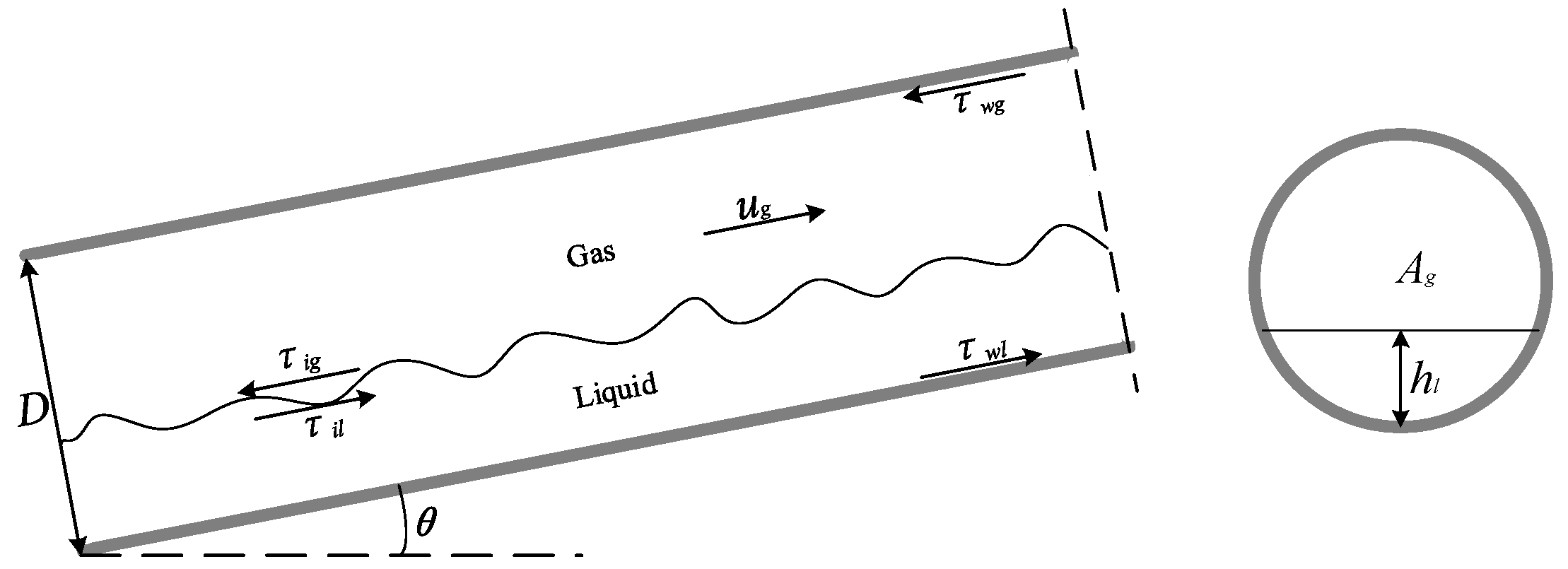





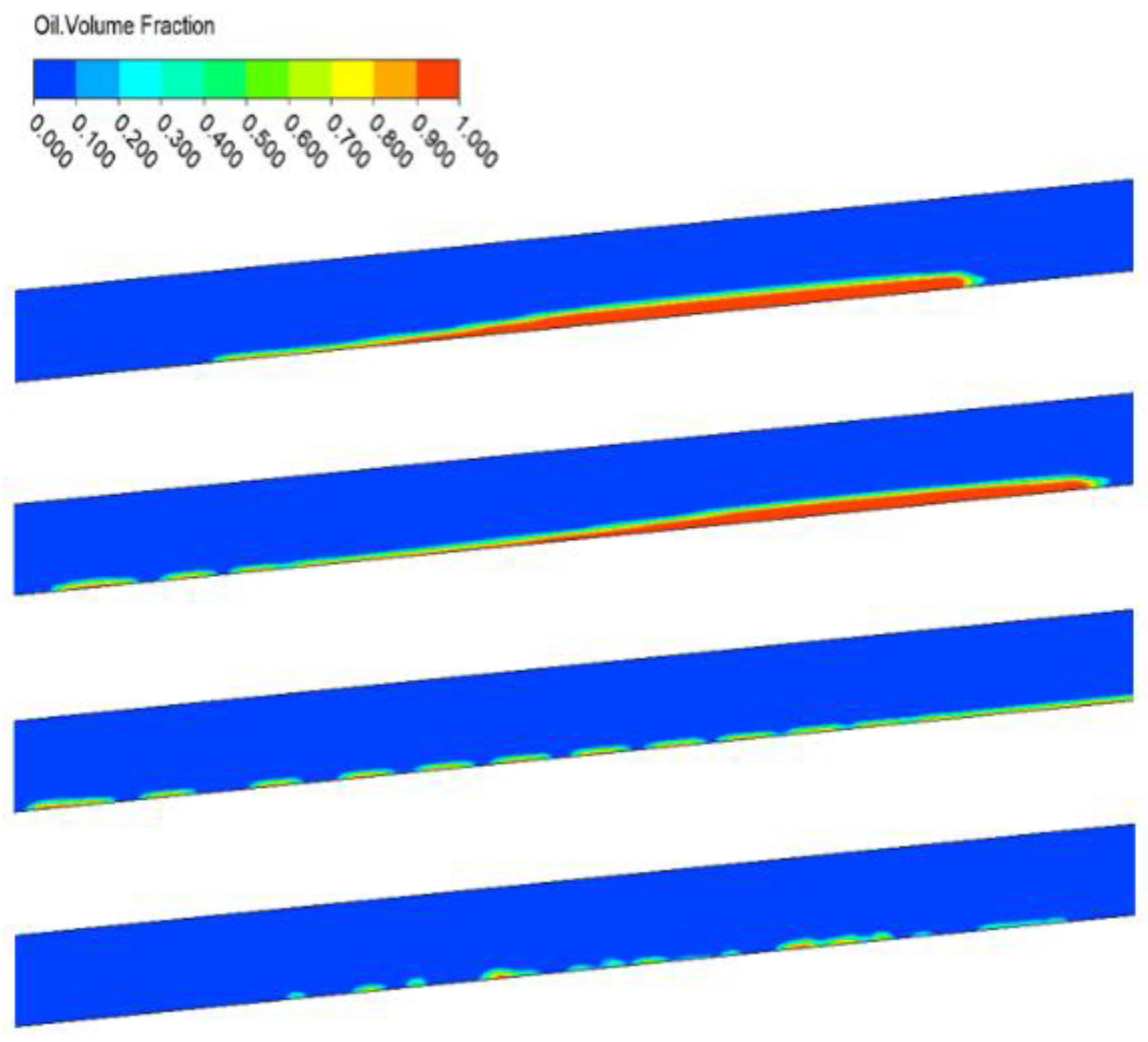
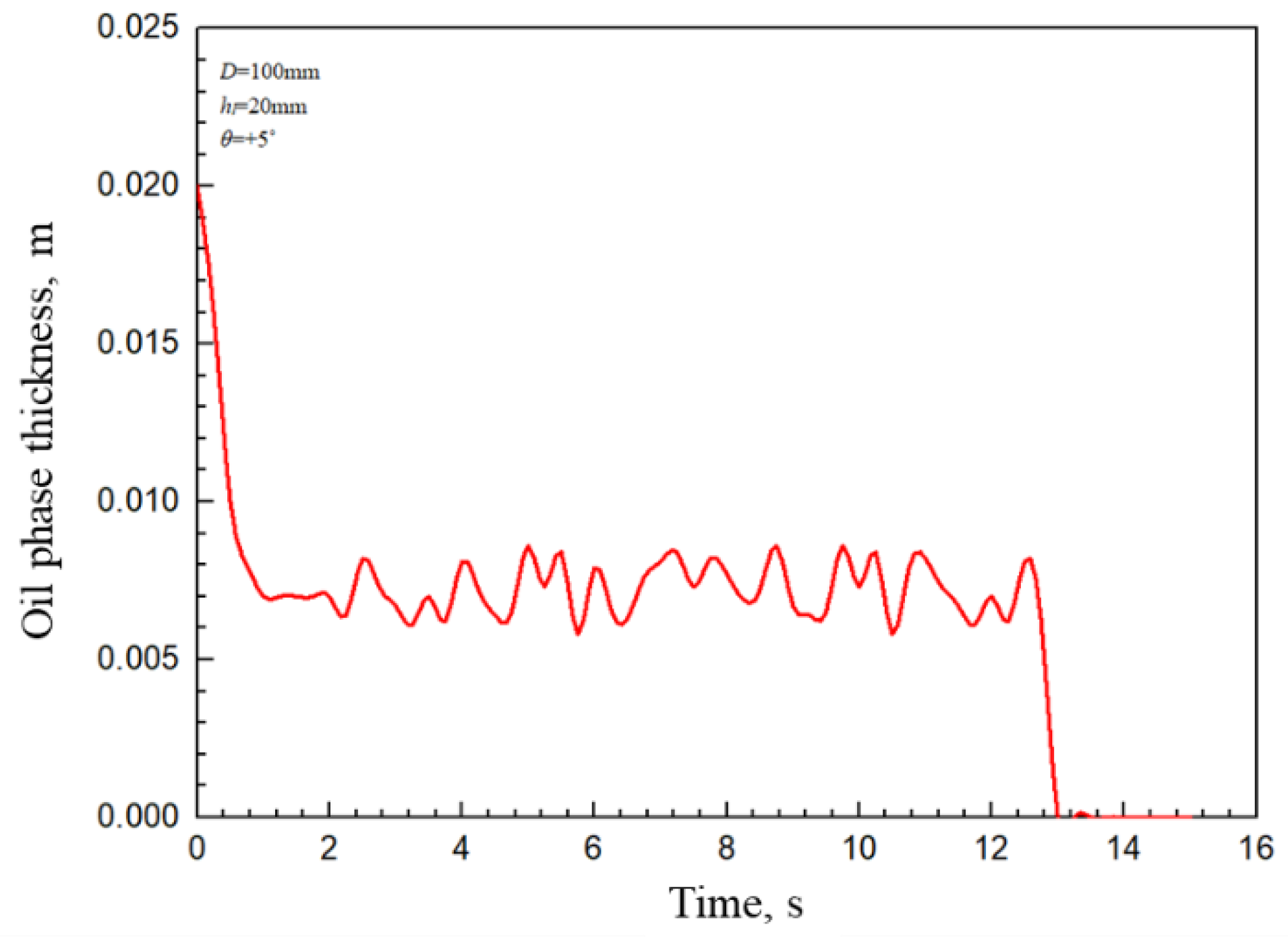
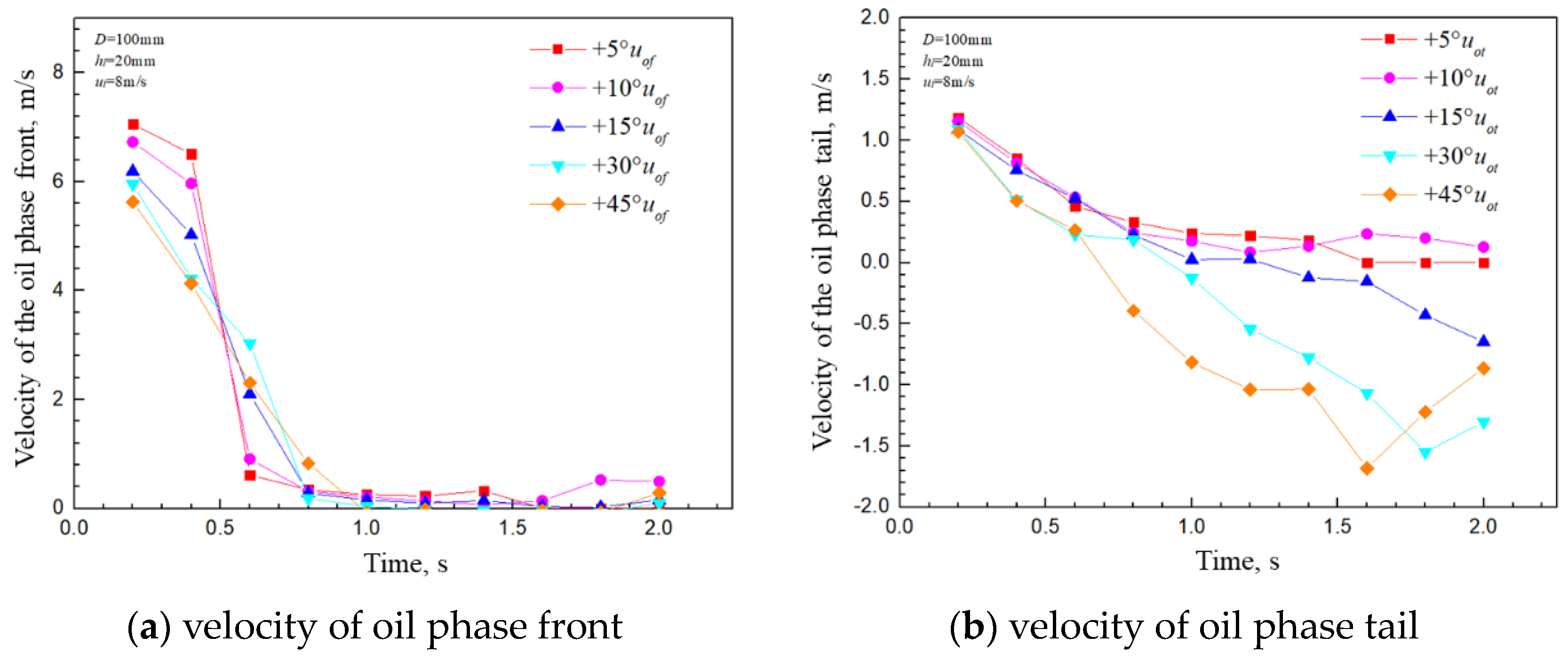
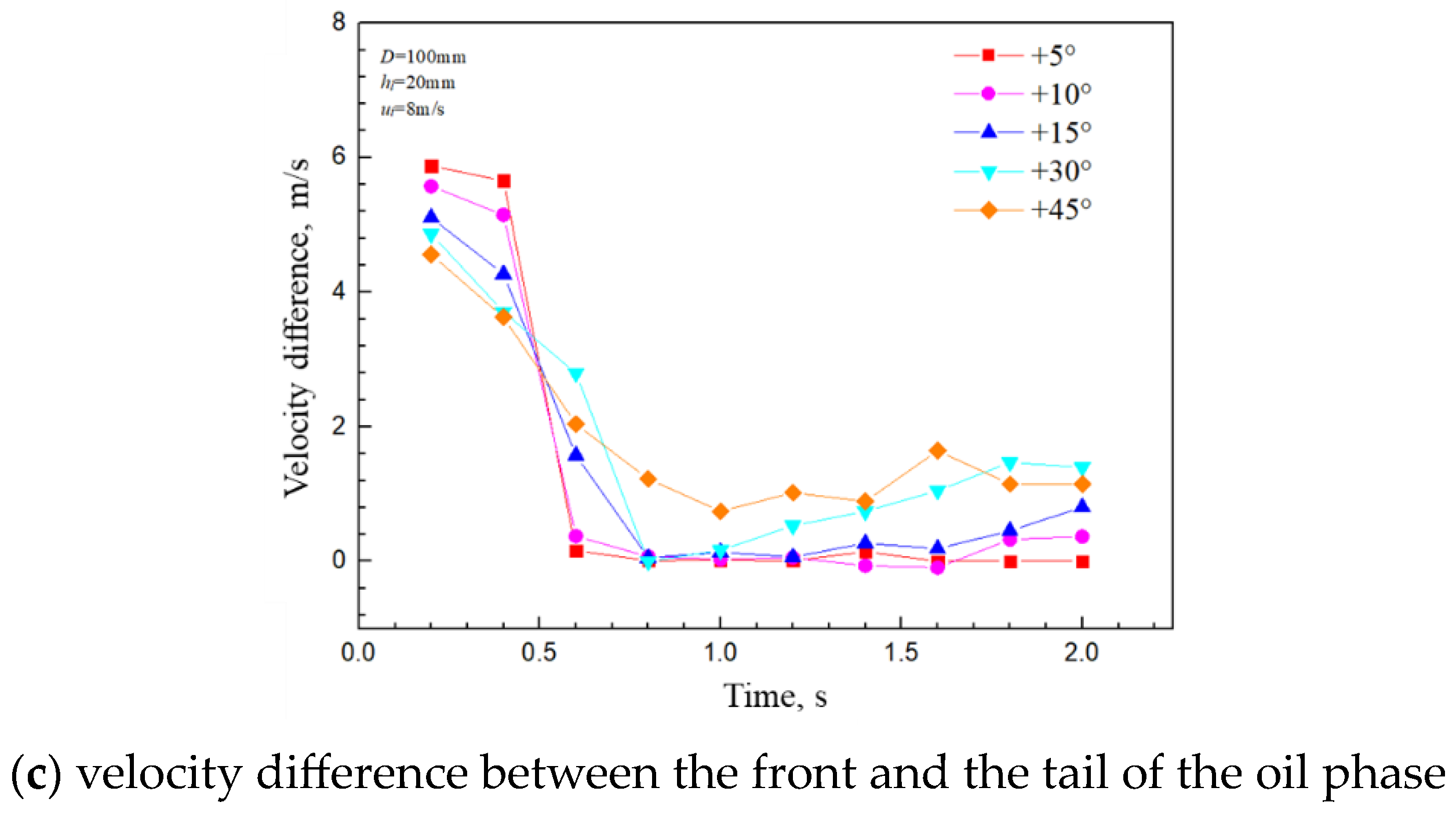
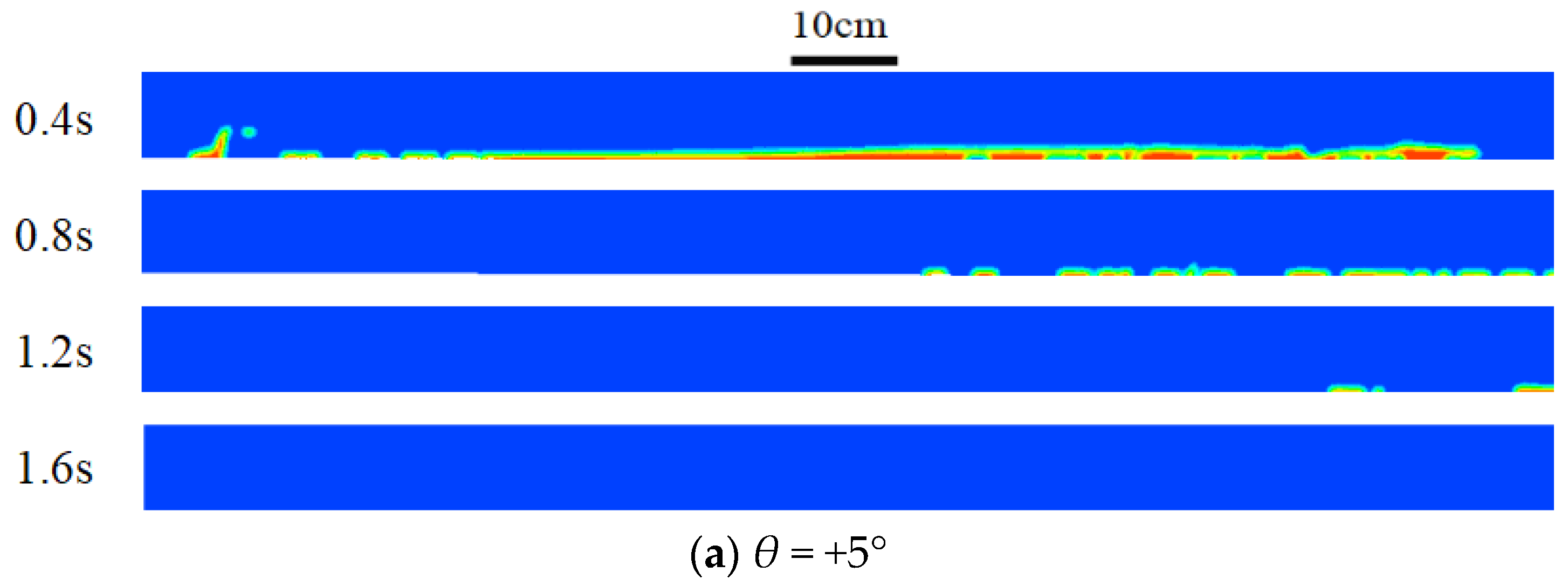


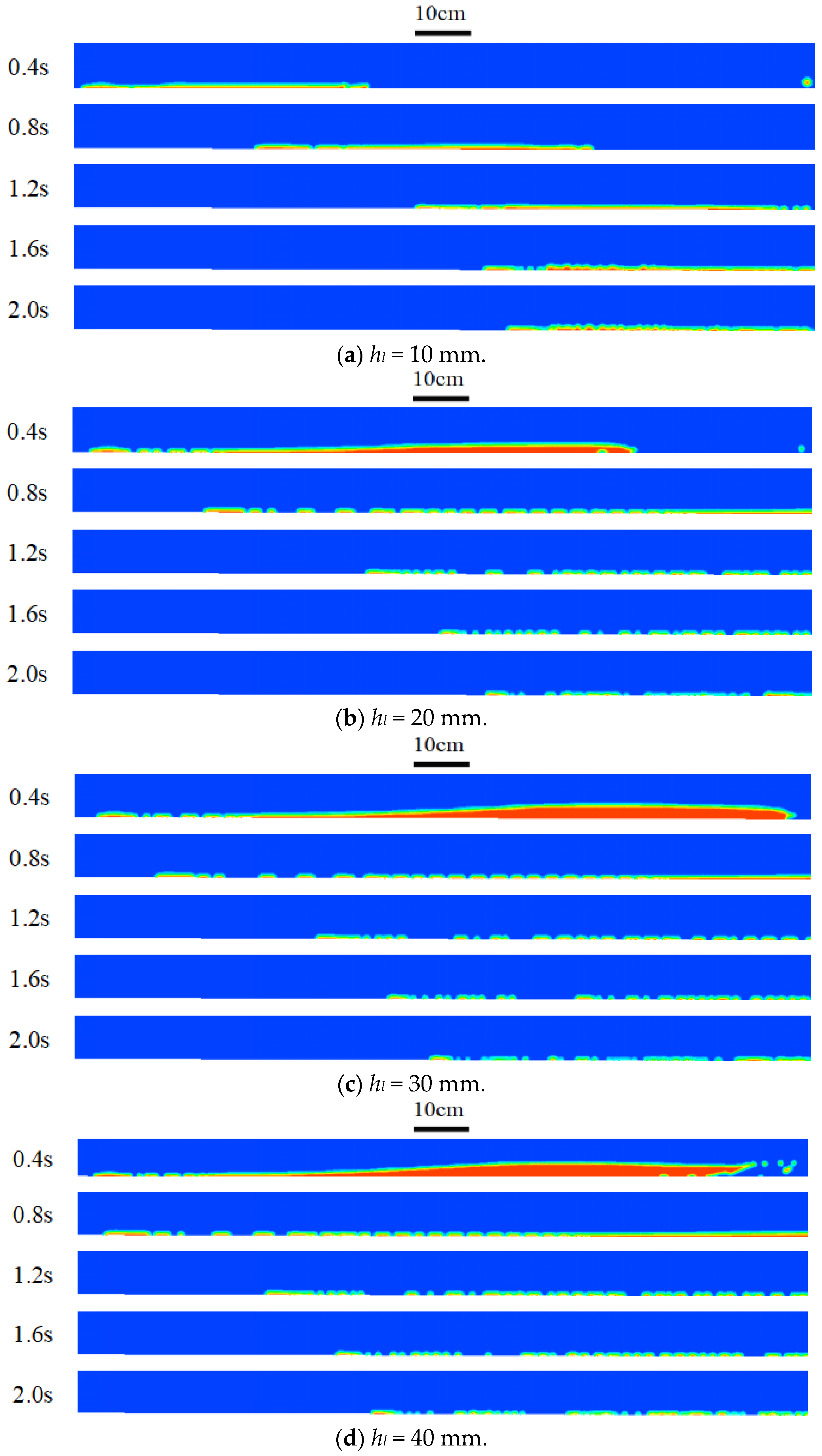
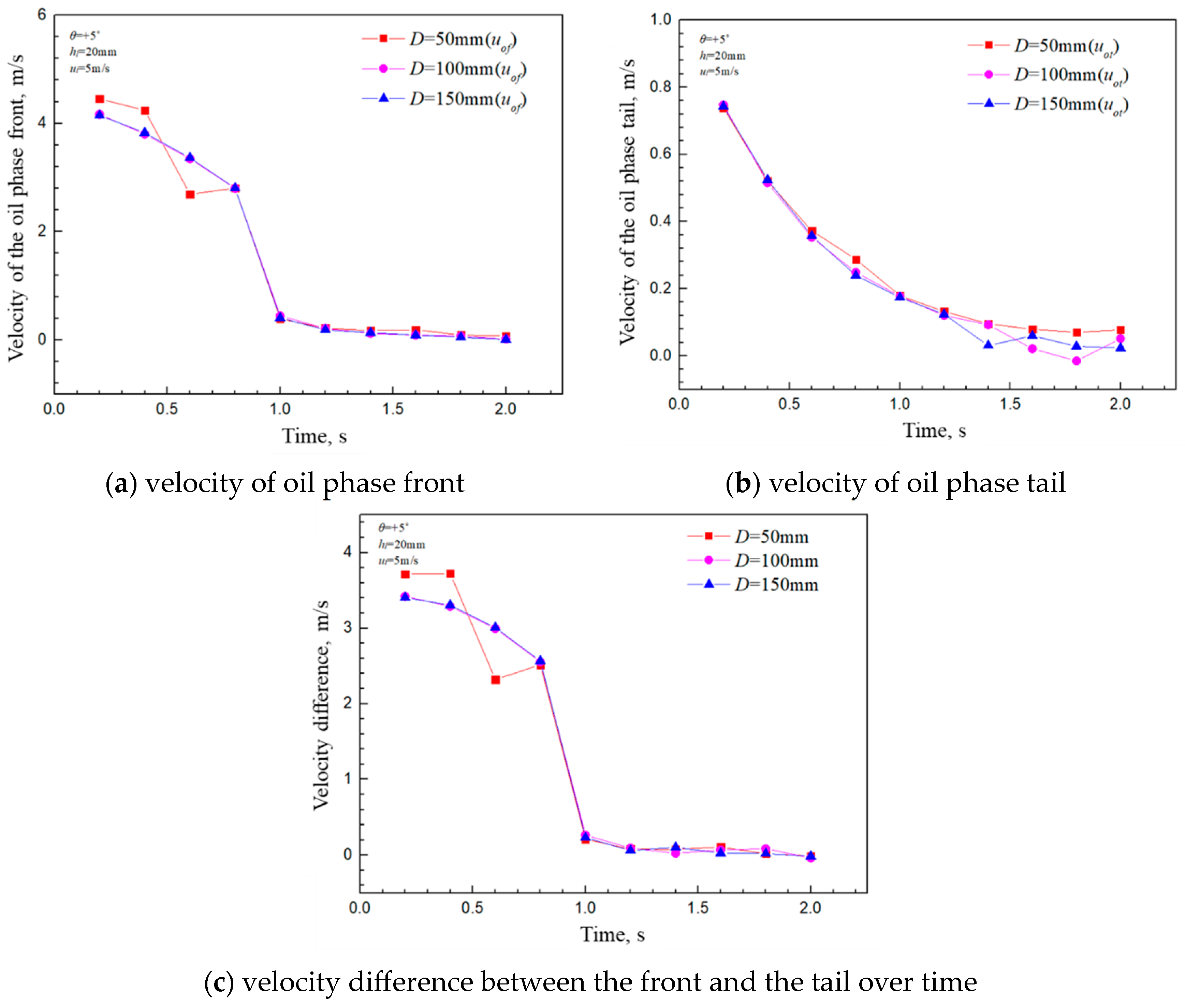
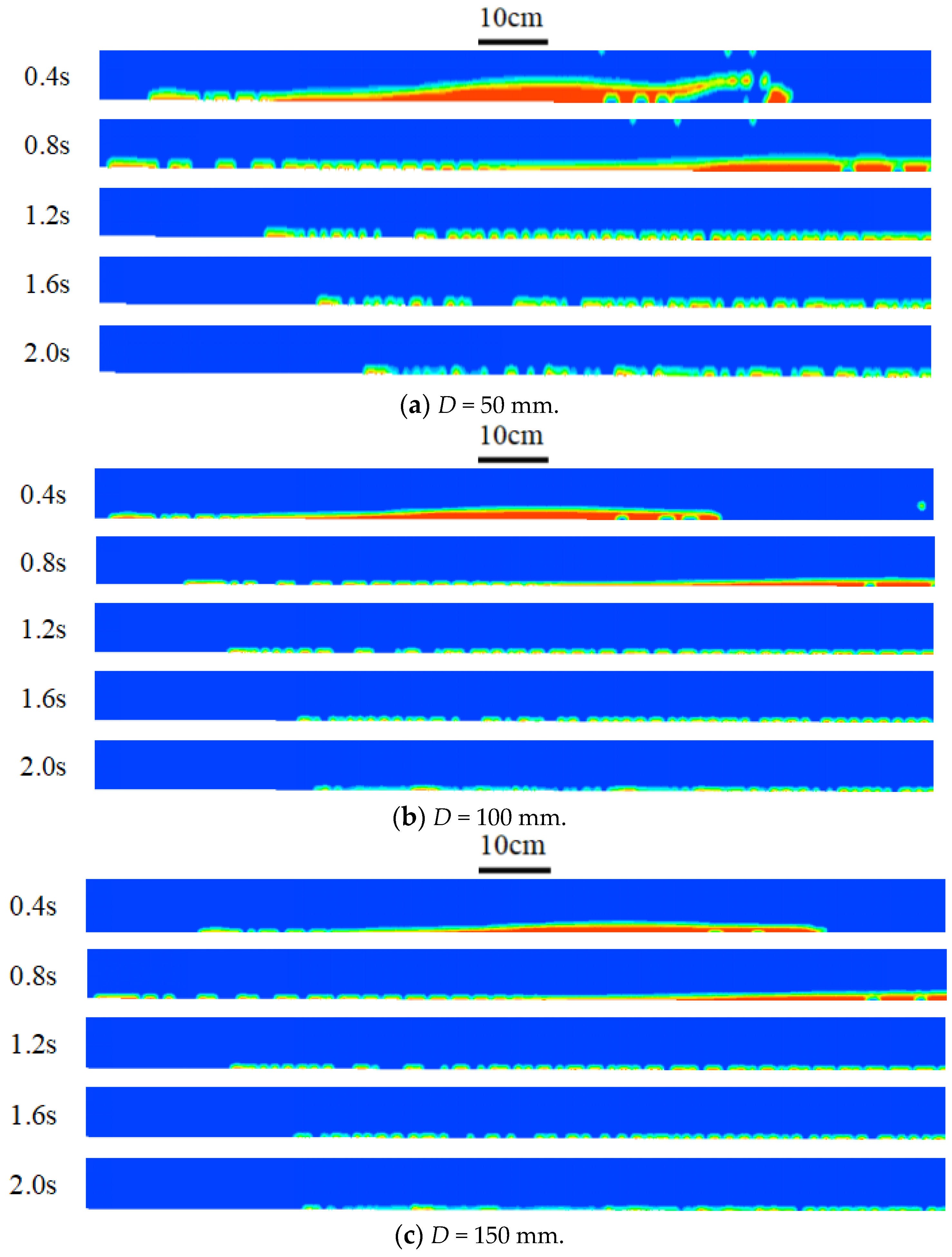
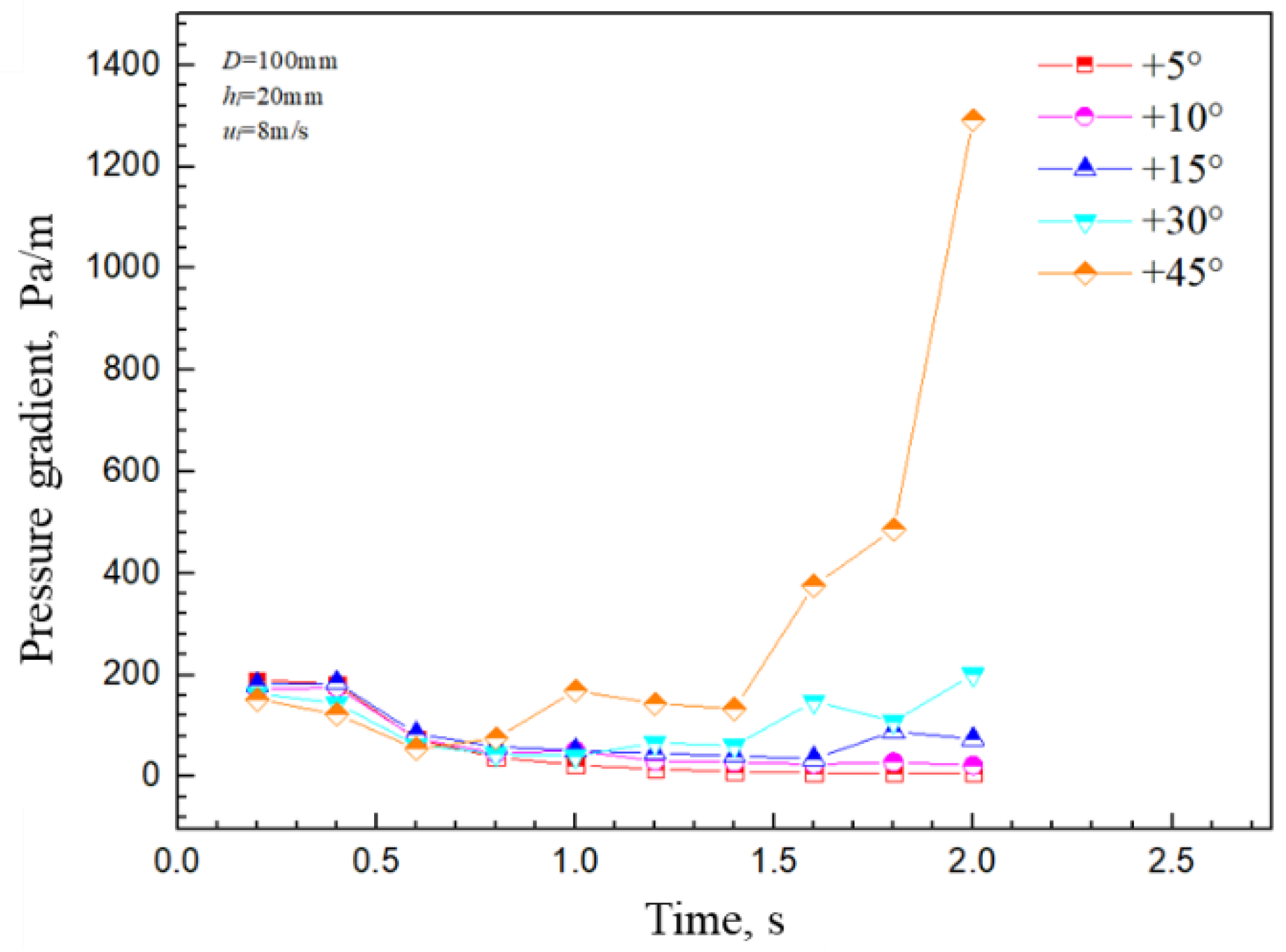
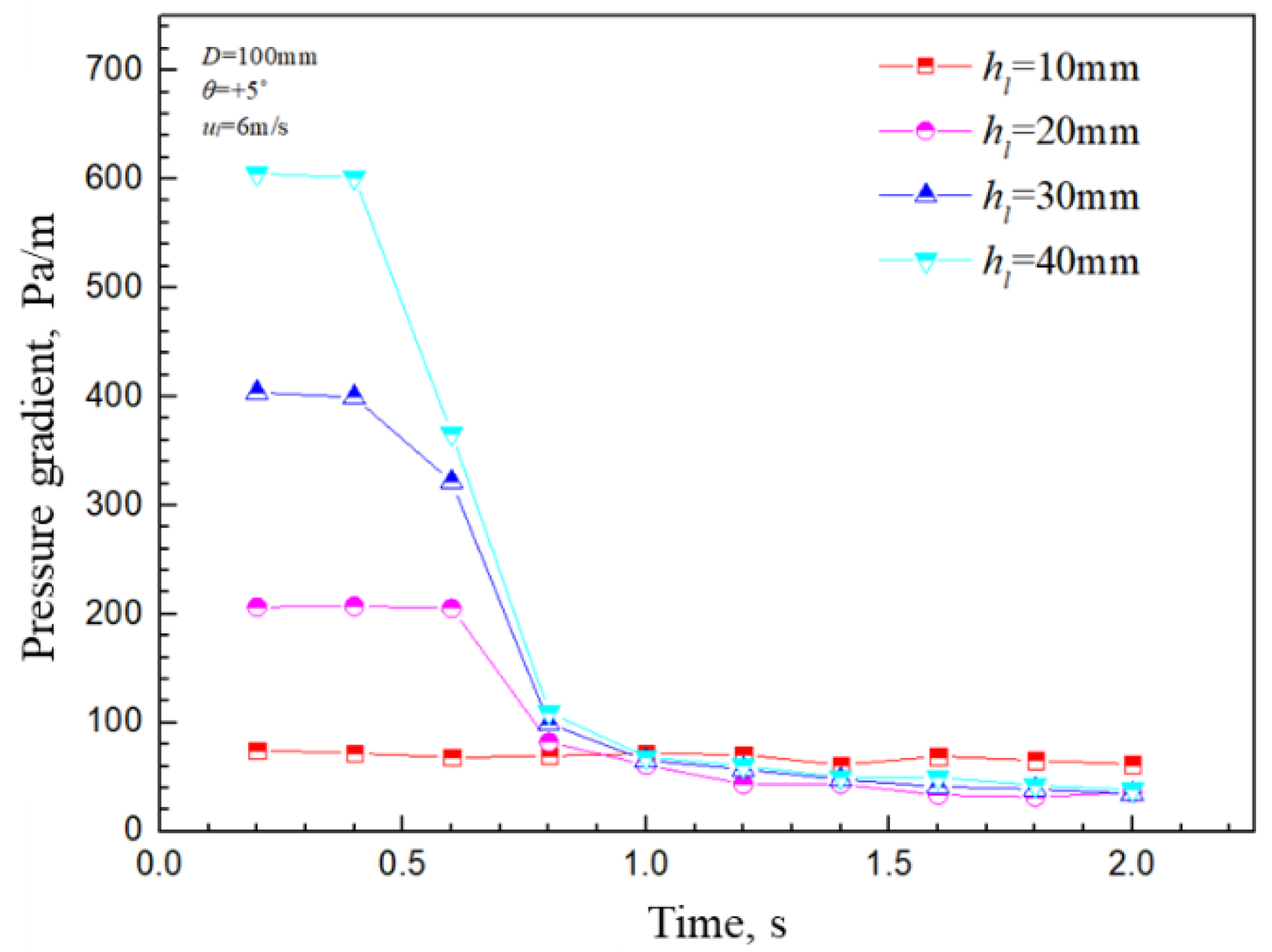
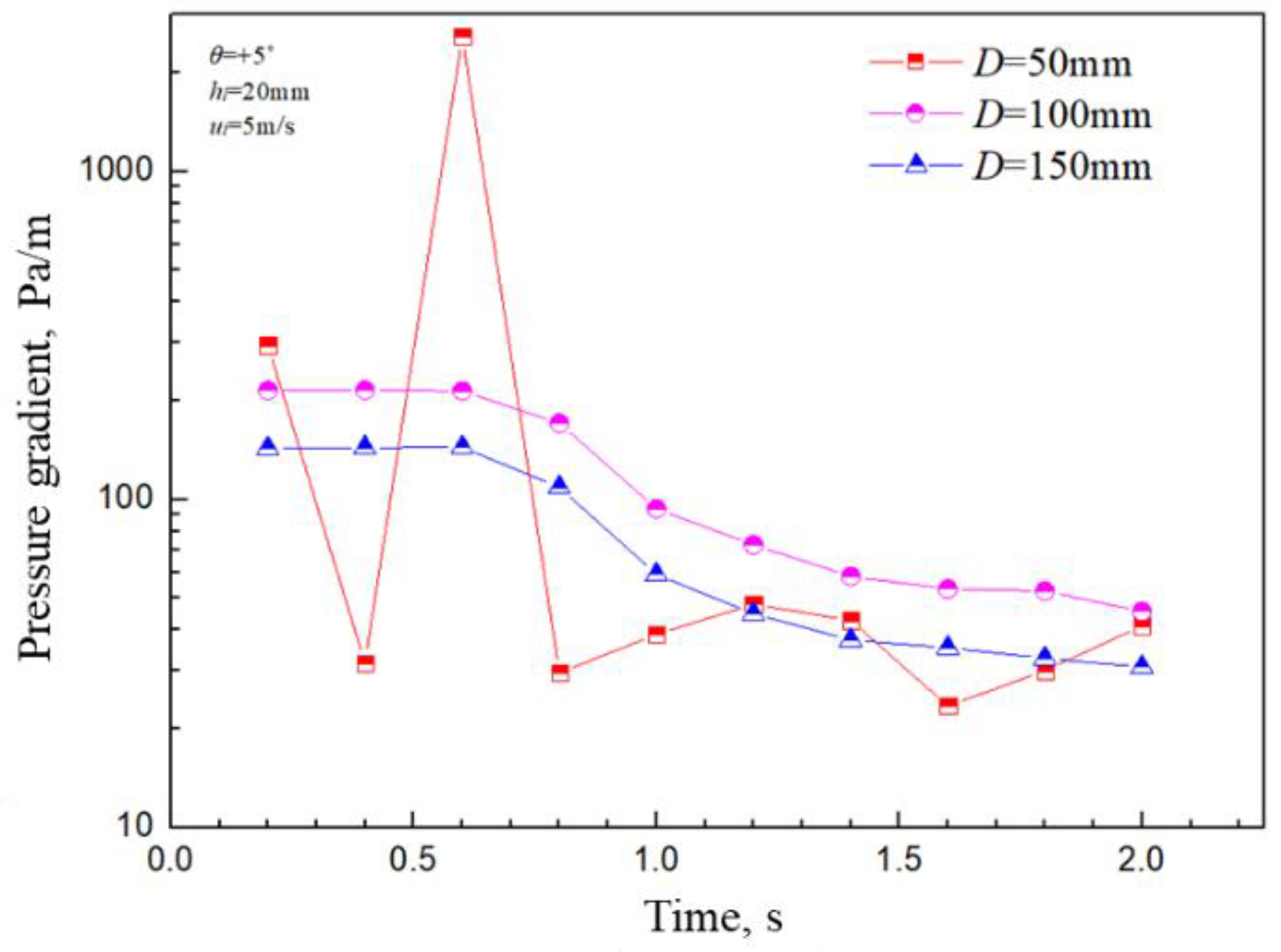
| Grid Type | Width (m) | Height (m) | Aspect Ratio | Number of Model Meshes |
|---|---|---|---|---|
| 1 | 0.005 | 0.005 | 1 | 15,962 |
| 2 | 0.008 | 0.004 | 2 | 12,450 |
| 3 | 0.012 | 0.004 | 3 | 10,849 |
| Time (s) | Length (m) |
|---|---|
| 0.15 | 0.8964 |
| 0.45 | 1.4239 |
| 0.62 | 1.7772 |
| 0.75 | 1.6149 |
| 1.05 | 1.3905 |
| 1.35 | 1.2927 |
| 1.65 | 1.2749 |
| 1.95 | 1.2659 |
| 2.25 | 1.2685 |
| 2.55 | 1.2553 |
| 2.85 | 1.1773 |
| 3.15 | 1.1867 |
| 3.45 | 1.1489 |
| 3.75 | 1.0281 |
Disclaimer/Publisher’s Note: The statements, opinions and data contained in all publications are solely those of the individual author(s) and contributor(s) and not of MDPI and/or the editor(s). MDPI and/or the editor(s) disclaim responsibility for any injury to people or property resulting from any ideas, methods, instructions or products referred to in the content. |
© 2024 by the authors. Licensee MDPI, Basel, Switzerland. This article is an open access article distributed under the terms and conditions of the Creative Commons Attribution (CC BY) license (https://creativecommons.org/licenses/by/4.0/).
Share and Cite
Liu, H.; Chen, J.; Tao, J.; Li, N.; Duan, J.; Chen, Y. Gas-Liquid Hydrodynamics during Liquid Displacement by Gas in Up-Hill Pipeline. Processes 2024, 12, 394. https://doi.org/10.3390/pr12020394
Liu H, Chen J, Tao J, Li N, Duan J, Chen Y. Gas-Liquid Hydrodynamics during Liquid Displacement by Gas in Up-Hill Pipeline. Processes. 2024; 12(2):394. https://doi.org/10.3390/pr12020394
Chicago/Turabian StyleLiu, Huishu, Jianhui Chen, Jiali Tao, Na Li, Jimiao Duan, and Yan Chen. 2024. "Gas-Liquid Hydrodynamics during Liquid Displacement by Gas in Up-Hill Pipeline" Processes 12, no. 2: 394. https://doi.org/10.3390/pr12020394
APA StyleLiu, H., Chen, J., Tao, J., Li, N., Duan, J., & Chen, Y. (2024). Gas-Liquid Hydrodynamics during Liquid Displacement by Gas in Up-Hill Pipeline. Processes, 12(2), 394. https://doi.org/10.3390/pr12020394





